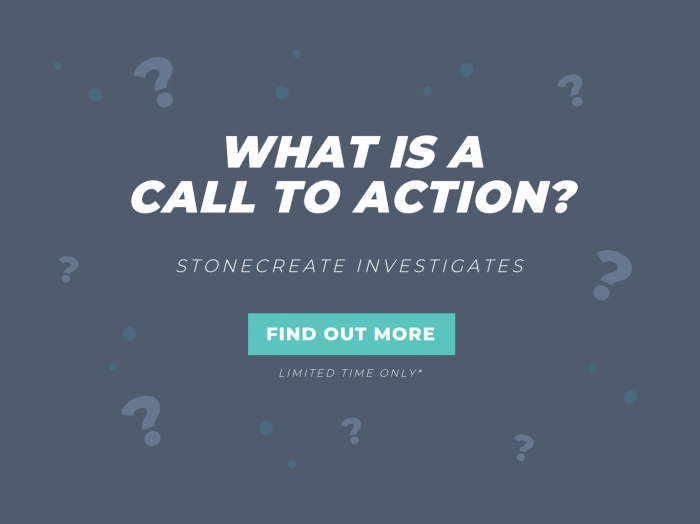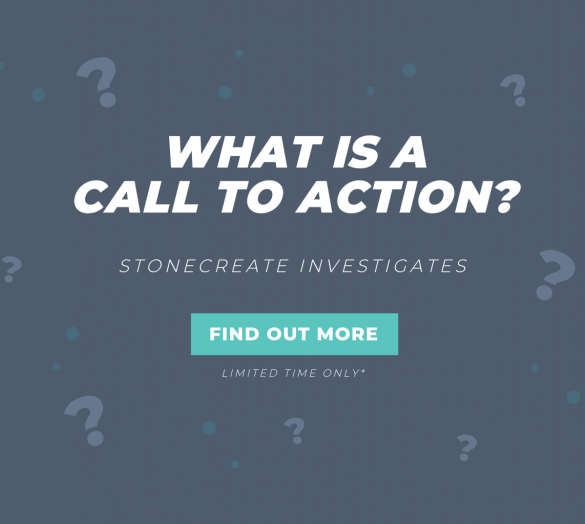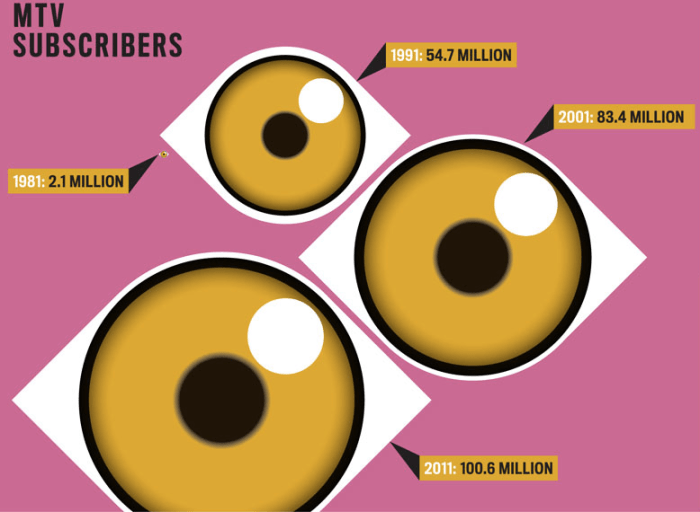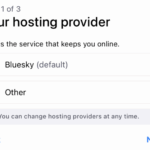How to create a call to action is crucial for any website or marketing campaign. A strong call to action (CTA) is more than just a button; it’s the spark that ignites conversions. From understanding the purpose of your CTA to crafting compelling language and optimizing placement, this guide will walk you through the entire process, ensuring your CTAs are as effective as possible.
This comprehensive guide dives deep into crafting effective calls to action, covering everything from understanding the purpose of a CTA to the importance of visual design, placement, and optimization. We’ll explore different types of CTAs, mobile considerations, and even accessibility. By the end, you’ll have the knowledge to design CTAs that drive engagement and conversions.
Understanding the Purpose of a Call to Action
A call to action (CTA) is a crucial element in any marketing strategy. It’s the specific instruction or prompt that guides a visitor or customer toward a desired outcome, whether it’s signing up for a newsletter, purchasing a product, or engaging with content. Effective CTAs are meticulously crafted to resonate with the target audience and drive conversions.Understanding the core objectives of a CTA is paramount for its effectiveness.
A well-defined purpose ensures that the action aligns with the overall marketing goals and generates the desired response. The most common objectives include lead generation, sales, engagement, and brand awareness.
Fundamental Objectives of a Call to Action
CTAs are designed to achieve specific objectives that directly contribute to the success of marketing campaigns. These objectives are essential for quantifying the effectiveness of a CTA and measuring its impact on overall marketing goals.
- Lead Generation: This objective focuses on collecting contact information from potential customers. Forms for email sign-ups, webinars, or free trials are examples of CTAs designed for lead generation. The primary goal is to nurture leads into qualified prospects, eventually converting them into customers.
- Sales Conversions: A CTA aiming for sales conversions is designed to drive immediate purchases. Clear and concise calls to action like “Buy Now,” “Add to Cart,” or “Get Started” are used to encourage direct sales transactions. This objective is typically tied to specific product pages or offers.
- Engagement and Content Consumption: This objective aims to increase interaction with existing content. Examples include “Learn More,” “Read the Full Article,” “Watch the Video,” or “Subscribe.” These CTAs encourage deeper engagement with the brand and its offerings.
- Brand Awareness: CTAs focused on brand awareness are often part of broader campaigns aiming to build recognition and recall. Examples include “Visit Our Website,” “Follow Us on Social Media,” or “Download Our Brochure.” These are often used in initial outreach efforts.
Alignment with Marketing Objectives
For optimal effectiveness, CTAs must be aligned with the overarching marketing objectives. This ensures that the actions taken by the audience directly support the overall goals of the marketing campaign.
Misaligned CTAs can lead to wasted resources and a lack of progress toward the desired outcomes. A marketing campaign focusing on lead generation should have CTAs that are specifically designed to collect and nurture leads, not simply to drive sales. Likewise, a campaign promoting brand awareness shouldn’t have CTAs primarily focused on direct sales.
Different CTA Types and Their Objectives
Different types of CTAs are suited to various objectives. The table below provides a comprehensive overview of CTA types and their corresponding objectives.
| CTA Type | Objective | Example |
|---|---|---|
| Purchase-focused | Drive immediate sales | “Buy Now,” “Add to Cart,” “Get a Free Trial” |
| Lead Generation | Collect contact information | “Sign Up,” “Download a Guide,” “Request a Demo” |
| Engagement-focused | Increase interaction with content | “Learn More,” “Read the Full Article,” “Watch the Video” |
| Brand Awareness | Build brand recognition | “Visit Our Website,” “Follow Us on Social Media,” “Download Our Brochure” |
Crafting Compelling Language
Crafting a call to action (CTA) isn’t just about slapping a button on your page. It’s about crafting a message that resonates with your audience and compels them to take the desired action. Effective CTAs are concise, clear, and designed to tap into human psychology, urging readers to click, buy, or sign up. The language you use is crucial in achieving this.The key to a successful CTA lies in understanding your target audience and tailoring your message to their specific needs and desires.
Strong verbs, active voice, and carefully chosen phrasing can transform a passive visitor into an active participant. This section delves into the techniques for creating compelling CTA language.
Techniques for Persuasive CTA Text
Crafting compelling CTA text requires understanding the nuances of human behavior and communication. Effective CTAs use language that is both clear and persuasive, encouraging users to take the desired action. This often involves appealing to emotions, emphasizing benefits, and using strong verbs.
- Emphasize benefits over features. Instead of highlighting product specifications, focus on how the product or service will improve the user’s life. For example, instead of “High-resolution camera,” try “Capture stunning memories with our crystal-clear photos.” This shift focuses on the outcome, not just the technical aspects.
- Use strong verbs and active voice. Passive voice can be weak and indirect. Active voice, combined with strong verbs, makes the CTA more direct and engaging. For example, “Download Now” is more forceful than “You can download now.” Using verbs like “Claim,” “Unlock,” “Discover,” or “Experience” adds a sense of urgency and excitement.
- Keep it concise and scannable. People often skim online content. Use short, impactful sentences and phrases to convey your message quickly and effectively. Avoid jargon or overly complex language that could confuse or alienate your audience.
- Consider your audience’s perspective. Understanding your target audience is paramount. Tailor your language to resonate with their values, interests, and motivations. What are their pain points? How can you address them through your CTA?
Strong Verbs and Active Voice in CTAs
Using strong verbs and active voice in your CTAs can significantly boost their effectiveness. These elements convey a sense of immediacy and action, urging users to take the desired step.
- Strong Verbs: Replace weak verbs like “learn” or “view” with stronger alternatives such as “discover,” “explore,” “claim,” or “unlock.” Strong verbs create a sense of excitement and anticipation.
- Active Voice: Using active voice ensures that the subject of the sentence performs the action. This makes the CTA more direct and impactful. For instance, “Get your free trial” is more direct than “A free trial can be obtained.”
Different CTA Phrasing Styles
Different CTA styles can cater to different user needs and motivations. A benefit-driven approach emphasizes the advantages of the product or service, while an urgent style encourages immediate action.
- Benefit-driven: This style focuses on the positive outcomes users will experience. For instance, “Experience seamless online shopping with our platform” emphasizes the benefit of a smooth shopping experience.
- Urgent: This style creates a sense of limited availability or time sensitivity, encouraging immediate action. For example, “Limited-time offer: Get 20% off your first order” implies a sense of urgency.
Effective CTAs for Various Products/Services, How to create a call to action
The most effective CTAs are tailored to the specific product or service.
- E-commerce: “Shop Now,” “Add to Cart,” “Buy Now,” “Learn More.”
- Software/Subscription Services: “Get Your Free Trial,” “Start Your Free Month,” “Sign Up Now,” “Unlock Premium Features.”
- Educational Resources: “Enroll Now,” “Download the Guide,” “Access the Course,” “Learn More.”
CTA Structure for Different Platforms
The structure of your CTA should adapt to the platform where it appears.
| Platform | CTA Structure |
|---|---|
| Website | Clear button with concise, benefit-driven text, ideally near the product/service description. |
| Social Media | Shorter, engaging text, including a link. Consider using emojis to increase visibility. |
| Short, compelling subject line and a clear, concise CTA button within the email body. |
Visual Elements and Design
A compelling call to action (CTA) isn’t just about words; it’s a holistic experience. Visual elements play a crucial role in grabbing attention and guiding users towards the desired action. Effective design principles, including contrasting colors, appropriate font choices, and strategically placed buttons, significantly impact user engagement and conversion rates.The visual presentation of a call to action (CTA) is just as important as the message itself.
Users make snap judgments based on visual cues. A well-designed CTA instantly communicates credibility and urgency, while a poorly designed one can deter users and lead to lost opportunities. Understanding the visual elements of a CTA is key to its effectiveness.
Highlighting CTAs with Visual Cues
Visual cues are essential for directing user attention to the call to action. These cues can range from contrasting colors and shapes to strategically placed icons. By visually distinguishing the CTA from surrounding content, you guide users towards the desired action. The goal is to make the CTA stand out without being overwhelming or distracting. Clear visual cues are crucial for guiding the user’s eye and ensuring they understand the intended action.
Contrasting Colors and Fonts for Readability
Choosing contrasting colors and fonts is critical for readability and visual appeal. High contrast between the button’s background and text ensures the CTA is easily discernible. For example, a dark-blue button on a light-gray background is more readable than a light-gray button on a dark-blue background. Similarly, using a bold, easily readable font for the CTA text enhances its impact.
Font selection should complement the overall design and reinforce the brand’s identity. Pairing a sans-serif font with a serif font for contrast can be an effective strategy.
Different Button Styles and Their Impact
Different button styles evoke different emotions and encourage varying levels of engagement. A rounded button can feel friendlier and approachable, while a sharp, angular button can convey a sense of urgency or professionalism. The style should align with the overall tone and branding of the website or application. A button that resembles a “call to action” is more likely to be perceived as actionable and is more visually appealing.
Elements to Consider in CTA Design
Several elements should be considered when designing a visually appealing CTA. These include:
- Color Contrast: Ensure sufficient contrast between the button background and text to guarantee readability, especially for users with visual impairments. This is a crucial accessibility consideration.
- Font Choice: Select a font that is easily readable and aligns with the overall brand identity. A bold font can enhance visibility and emphasis.
- Button Shape: Choose a shape that aligns with the overall design aesthetic and evokes the desired emotion. A rounded button often feels friendlier than a sharp-angled one.
- Button Size: Select a size that is proportionate to the surrounding content. A button that is too small may be overlooked, while a button that is too large may feel intrusive.
- Button Placement: Strategically position the button within the layout to ensure optimal visibility and encourage interaction. Placing it near a form or call to action area can improve the conversion rate.
- Whitespace: Maintain adequate whitespace around the button to prevent visual clutter and maintain clarity.
Best Practices for Button Size, Shape, and Placement
This table Artikels best practices for button size, shape, and placement:
| Element | Description | Example |
|---|---|---|
| Button Size | Size should be proportional to the surrounding content and clear enough to be easily noticed. | For a large screen, a button with a width of 200px and a height of 50px could be appropriate. |
| Button Shape | Shape should be consistent with the overall brand aesthetic and evoke the desired emotion. | Rounded buttons for a friendly feel, sharp-angled buttons for urgency. |
| Button Placement | Strategically position the button to maximize visibility and encourage interaction. | Near a form, call to action area, or a logical next step within the content. |
Placement and Context
The strategic placement of a call-to-action (CTA) is crucial for its effectiveness. A poorly positioned CTA can lead to missed conversions, while a well-placed one can significantly boost engagement and drive desired actions. Understanding the context of the page where the CTA appears is equally important. A CTA that works perfectly on a product page might be ineffective on a blog post.Effective CTAs aren’t just about what you say; they’re also about where and how you say it.
Careful consideration of placement and context ensures your message resonates with the user at the precise moment they’re most receptive to it. This approach maximizes the chances of driving the desired action.
Strategic Importance of CTA Placement
The placement of a CTA directly influences its click-through rate (CTR). A CTA placed at the bottom of a long-form page, for example, may receive less attention compared to one placed prominently above the fold. The optimal placement varies based on the type of page and the desired action.
Crafting a compelling call to action is key for any website, but how do you really grab attention? One effective method is to use a popup on your WordPress site to promote your Twitter page. This can be a great way to drive traffic and boost your presence. Check out this helpful guide on how to promote your Twitter page in WordPress with a popup for actionable tips and tricks.
Ultimately, a well-designed call to action is essential for any successful online strategy.
Impact of Context on CTA Effectiveness
Context is key. A CTA promoting a free trial might be highly effective on a landing page dedicated to that offer, but less so on a product page. The user’s current engagement stage and the purpose of the page need to be carefully considered. The goal is to align the CTA with the user’s expectations and needs within the specific context.
Optimal Placement Locations for Various CTAs
Different CTAs should be placed strategically based on their purpose. For example, a “Buy Now” button is best placed immediately below a product image, or at the top of a page. A “Learn More” button on a blog post should ideally be near the conclusion of the article.
- Product Pages: “Add to Cart” or “Buy Now” buttons should be prominently displayed, often near the product image and key specifications. This high visibility ensures that users can easily complete the purchase process.
- Landing Pages: “Sign Up” or “Download Now” CTAs are often placed near the top of the page, to grab attention and immediately highlight the offer. This is because these pages are focused on a single offer.
- Blog Posts: “Subscribe,” “Leave a Comment,” and “Read More” CTAs should be positioned near the end of the post, prompting engagement with the content and with the site.
Tailoring CTAs to Different User Segments
A one-size-fits-all approach to CTAs is unlikely to be effective. Understanding different user segments—such as first-time visitors versus returning customers—allows for tailored CTAs that address their specific needs and motivations.
- First-time visitors might respond more positively to offers that highlight value or ease of use, like “Try for Free”.
- Returning customers might be more receptive to promotions or exclusive discounts, such as “Upgrade Your Account” or “Get Exclusive Access”.
CTA Placement Recommendations for Various Page Types
This table provides a general guideline for CTA placement. Remember to test and optimize placement to find what works best for your specific audience and site.
| Page Type | Optimal CTA Placement | Example CTA |
|---|---|---|
| Product Page | Above the fold, near product image, below product description | “Add to Cart,” “Buy Now” |
| Landing Page | Above the fold, near top of page | “Sign Up,” “Download Now” |
| Blog Post | Near the end of the post | “Subscribe,” “Leave a Comment,” “Read More” |
| Pricing Page | Below pricing tables, above call to action for a specific plan | “Get Started,” “Choose Your Plan” |
Testing and Optimization: How To Create A Call To Action
Fine-tuning your call to action (CTA) isn’t a one-and-done process. Continuous testing and analysis are crucial for maximizing its effectiveness. Understanding how users interact with your CTA, and iteratively refining it based on data, is key to driving conversions. This involves more than just tweaking the wording; it’s about understanding the full user journey and optimizing every touchpoint.
A/B Testing Methods
A/B testing is a cornerstone of effective CTA optimization. It involves creating variations of your CTA (different text, button colors, or even images) and presenting them to different segments of your audience. This controlled experiment allows you to determine which variation performs better in terms of achieving your desired outcome. For example, you might test a bold, red button against a more subtle, green button to see which attracts more clicks.
By rigorously testing different elements, you can identify what resonates most with your target audience.
Tracking and Analyzing CTA Performance Metrics
To measure the success of your CTA, you need to track and analyze relevant metrics. This involves gathering data on user interactions with your CTA, such as clicks, conversions, and other actions. Critical metrics include click-through rate (CTR), conversion rate, bounce rate, and time on page. Analyzing these metrics provides insights into what’s working and what’s not.
Performance Metrics Examples
Monitoring various performance metrics provides a comprehensive understanding of CTA effectiveness. Click-through rate (CTR) measures the percentage of people who see your CTA and click it. Conversion rate measures the percentage of people who click your CTA and complete the desired action (e.g., making a purchase). Bounce rate, the percentage of visitors who leave your website after viewing only one page, can indirectly highlight issues with your CTA’s placement or compelling nature.
A high bounce rate alongside a low CTR often indicates a problem with your CTA. Careful tracking of these metrics allows you to pinpoint areas needing improvement.
Iterative Process of CTA Optimization
Optimization is an iterative process. You don’t just test once and declare victory. Regular testing and analysis, coupled with refining your CTAs based on the results, are vital for long-term success. A/B testing is cyclical. You analyze the results of one test, then create new variations based on those findings.
This process of continuous improvement leads to significant gains in conversion rates over time. The results of one test inform the next, leading to gradual, but substantial, improvements.
CTA A/B Testing Process
| Step | Description |
|---|---|
| 1. Define Objectives | Clearly Artikel the desired outcome of the test (e.g., increase clicks, boost conversions). |
| 2. Identify Variables | Select specific elements of the CTA to test (e.g., button text, color, image). |
| 3. Create Variations | Develop different versions of the CTA based on the identified variables. |
| 4. Allocate Traffic | Split your website traffic between the variations using tools like Google Optimize. |
| 5. Collect Data | Monitor the performance of each variation over a set period (e.g., 24 hours to a week). |
| 6. Analyze Results | Compare the performance of each variation based on the defined metrics. |
| 7. Implement Changes | Implement the variation that performed best, and then repeat the process with new variations. |
Types of Calls to Action

Crafting effective calls to action (CTAs) is crucial for driving desired user behavior on any platform. Understanding the different types of CTAs available allows marketers to tailor their approach and maximize conversions. This section explores various CTA types, their specific uses, and how to implement them effectively across different platforms.Different CTAs serve distinct purposes, ranging from immediate action to encouraging further engagement.
Choosing the right CTA is essential to achieving the desired outcome, whether it’s a sale, a lead capture, or increased brand awareness.
Crafting a compelling call to action is key for any marketing strategy. Think about what you want your audience to do – buy a product, sign up for a newsletter, or visit your website. Recent changes to Google Ads, like those detailed in google ads puts the brakes on accelerated delivery , highlight the importance of a well-defined call to action.
Ultimately, a strong call to action, clear and concise, is crucial for driving conversions.
Common CTA Types
Knowing the different types of CTAs is key to crafting a successful marketing campaign. This understanding allows you to match the right action to the specific goal. This section Artikels common CTA types, including their descriptions and practical application.
- Shop Now: This is a straightforward CTA that encourages immediate purchase. It’s ideal for e-commerce sites and promotional campaigns. The “Shop Now” button is visually prominent and encourages immediate action. Examples include online retailers using “Shop Now” buttons on product pages or during sales. Its effectiveness relies on clear product presentation and a seamless checkout process.
Crafting a compelling call to action is key for any marketing campaign. Think about what you want your audience to do – buy, sign up, or learn more. Leveraging platforms like Amazon Sponsored Display, with its audience targeting features, like the recent Amazon Sponsored Display Amazon Audience Roll Out here , can significantly improve your conversion rates.
Ultimately, a strong call to action, tailored to your target audience, is essential for driving results.
- Learn More: This CTA is used to provide more detailed information about a product, service, or topic. It’s suitable for blog posts, articles, and informational websites. A “Learn More” button is typically placed at the end of a brief description or article to encourage further engagement. A “Learn More” button often leads to a dedicated page with comprehensive information.
For example, a blog post on a specific software could include a “Learn More” button leading to a detailed product description or demo.
- Contact Us: This CTA is designed to facilitate communication with a business or organization. It’s commonly found on websites, landing pages, and marketing materials. A “Contact Us” button or link directs visitors to a contact form, email address, or phone number. For example, a company selling consulting services may feature a prominent “Contact Us” button on their website to capture leads.
- Sign Up: This CTA encourages users to create an account. It’s effective for building email lists, gathering user data, and facilitating user-generated content. A “Sign Up” button is usually prominently displayed, often on landing pages or marketing emails. A clear benefit is often included, such as a discount or exclusive content. An example would be an online magazine offering a free subscription in exchange for email registration.
- Download Now: This CTA is particularly relevant for digital content such as ebooks, white papers, or software trials. It prompts immediate download. This type of CTA often appears on landing pages or dedicated download pages. The value proposition of the downloadable content is highlighted to entice users to click. For instance, a SaaS company may offer a free trial in exchange for a user’s email address.
- Request a Demo: This CTA encourages users to schedule a demo or trial session to experience a product or service firsthand. It’s particularly effective for software, SaaS, and consulting services. This CTA often requires providing contact information or scheduling details. For example, a cloud-based software provider could use a “Request a Demo” button to guide users through the process of booking a trial.
CTA Classification Table
This table categorizes various CTAs based on their primary function.
| CTA Type | Primary Function | Typical Use Cases |
|---|---|---|
| Shop Now | Driving immediate purchase | E-commerce websites, promotional campaigns |
| Learn More | Encouraging further engagement | Blog posts, informational websites |
| Contact Us | Facilitating communication | Websites, landing pages, marketing materials |
| Sign Up | Building email lists, gathering data | Landing pages, marketing emails |
| Download Now | Promoting digital content | Landing pages, dedicated download pages |
| Request a Demo | Encouraging product/service experience | Software, SaaS, consulting services |
Mobile-First Considerations
In today’s digital landscape, mobile devices are the primary way many people interact with websites and brands. A strong call-to-action (CTA) strategy must prioritize the mobile experience to maximize conversions. Ignoring mobile-first design principles can lead to significant losses in potential customers and revenue.Mobile-first design is no longer an option, but a necessity. Optimizing CTAs for mobile devices ensures a seamless user experience, driving engagement and conversions.
By understanding mobile user behavior and adapting design accordingly, businesses can effectively capture and retain customers.
Importance of Mobile-Friendly CTAs
Mobile-friendly CTAs are crucial for a positive user experience. They enable users to readily take desired actions, regardless of the device they are using. A poorly designed CTA on a mobile device can deter users and lead them to competitors offering a more intuitive experience. This translates directly to lost opportunities for conversions and sales.
Designing CTAs for Touchscreens and Small Screens
Designing CTAs for touchscreens and small screens requires a different approach compared to desktop design. Buttons need to be large enough to tap easily with a finger. Consider using contrasting colors for better visibility and avoid overly complex layouts that are difficult to navigate on a small screen.
Responsive Design Principles for CTAs
Responsive design is paramount for creating mobile-friendly CTAs. This means the design adjusts automatically to different screen sizes and orientations. The CTA should maintain its clarity and functionality across various devices. Key elements to consider include button size, text legibility, and overall visual appeal. The CTA should remain intuitive and easy to use, no matter the device.
Examples of Successful Mobile CTAs
Several successful mobile CTAs leverage large, prominent buttons with clear calls to action. E-commerce websites often employ these tactics to facilitate seamless purchases. In addition, prominent and easily accessible CTAs, like a “Buy Now” button, encourage users to complete the purchase process. Social media platforms demonstrate similar approaches, guiding users to engage in desired actions, such as liking, commenting, or sharing content.
Desktop vs. Mobile CTA Design Considerations
| Feature | Desktop | Mobile |
|---|---|---|
| Button Size | Can be smaller, allowing for more space in the layout | Must be larger, enabling easy tapping with fingers |
| Color Contrast | Less critical, but important for visual appeal | Critical for visibility and readability on small screens |
| Layout Complexity | More complex layouts are possible | Should be simplified to ensure intuitive navigation |
| Text Size | Can be smaller, but still readable | Should be larger for easy reading on smaller screens |
| Placement | Placement can be strategic, taking advantage of screen space | Placement must be clear and accessible, typically placed prominently for easy identification |
Accessibility and Inclusivity
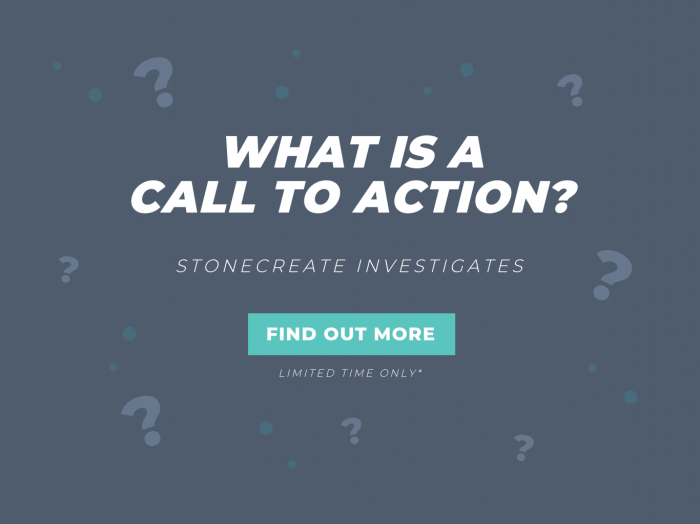
Creating a call to action (CTA) that works for everyone is crucial for maximizing impact and reaching a wider audience. A well-designed CTA should be easily understandable and usable by people with diverse abilities and backgrounds. Ignoring accessibility considerations can lead to significant missed opportunities and alienate potential customers.Effective CTAs are not just about aesthetics; they are about functionality and inclusivity.
This means understanding and implementing principles that make the call to action clear, usable, and engaging for all users. Failing to do so can result in a significant loss of potential conversions.
Importance of Accessible CTAs
Accessibility in CTAs is not just a matter of compliance; it’s a fundamental aspect of ethical and effective marketing. A diverse user base requires diverse design considerations. Ensuring your CTAs are accessible improves your brand image, enhances user experience, and ultimately leads to greater conversion rates.
Designing Accessible CTAs
Designing CTAs that comply with accessibility guidelines involves several key elements. Prioritizing clear visual hierarchy and contrast is paramount. Using sufficient color contrast ensures the CTA is visible to users with visual impairments. Employing alternative text for images and clear, concise language that avoids jargon is also critical.
Inclusive CTA Design Principles
Inclusive design principles go beyond simple compliance; they focus on creating a welcoming and accessible experience for all users. Using clear and simple language is essential. Avoid using slang, idioms, or highly technical terms. Provide multiple ways to interact with the CTA, such as keyboard navigation options. Consider the cultural context and potential misunderstandings of language when localizing your CTAs.
Clear and Concise Language
Using clear and concise language is paramount in any CTA. Avoid ambiguity and jargon. Keep the language simple and direct. Use active voice and avoid complex sentence structures. This principle ensures that the message is easily understood by all users, regardless of their background or level of technical expertise.
Use concise language to communicate the value proposition directly. For example, instead of “Click here to learn more about our innovative new product,” try “Discover our innovative new product.”
Best Practices for Creating Accessible CTAs
| Aspect | Best Practice | Example |
|---|---|---|
| Color Contrast | Ensure sufficient color contrast between the CTA button’s text and background. | A dark-colored button with light text, or vice versa. Tools are available to check color contrast ratios. |
| Font Size and Style | Use easily readable fonts and appropriate font sizes. | Use a font like Arial or Helvetica; adjust font size for optimal readability on different devices. |
| Alternative Text (Alt Text) | Provide descriptive alt text for images related to the CTA. | If the CTA is an image of a shopping cart, the alt text could be “Shop now.” |
| Keyboard Navigation | Ensure that the CTA is accessible via keyboard navigation. | Users should be able to access the CTA and perform actions using only a keyboard. |
| Language Simplicity | Use clear, concise, and straightforward language. | Avoid jargon or overly complex sentence structures. |
| Visual Hierarchy | Establish a clear visual hierarchy to guide the user’s eye to the CTA. | Use visual cues like size, color, and positioning to highlight the CTA. |
Final Conclusion
In conclusion, creating effective calls to action is a multifaceted process that requires understanding your audience, crafting compelling language, and strategically placing your CTAs. By considering factors like visual design, mobile-friendliness, and accessibility, you can optimize your CTAs to achieve maximum impact. Remember to continually test and refine your approach to ensure optimal results. Now go forth and create amazing calls to action!

